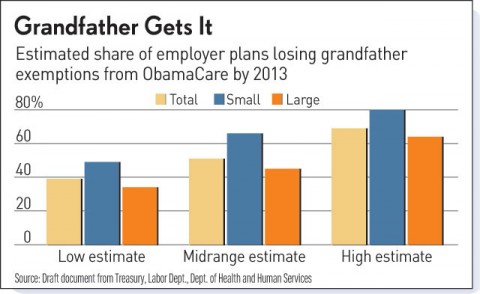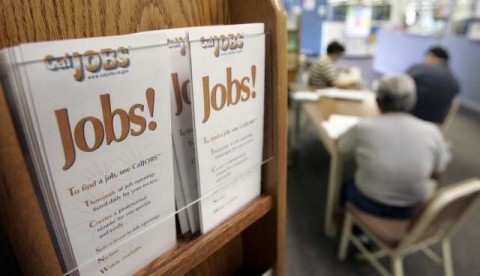Earlier this year, in his “Can we lose health coverage? Yes we can” column, syndicated columnist Deroy Murdock made a point asserted in dozens if not hundreds of columns and reports during the hide-and-seek legistlative process that ultimately led to the passage of what is commonly known as ObamaCare: The President’s core promise relating to the statist health care legislation that ultimately became law in March — namely that “If you like your health care plan, you will be able to keep your health care plan. Period. No one will take it away. No matter what” — could not and would not be kept. In that column, Murdock quoted Cato Institute analyst Michael Cannon as follows: “Obama’s definition of ‘meaningful’ coverage could eliminate the health plans that now cover as many as half of the 159 million Americans with employer-sponsored insurance, plus more than half of the roughly 18 million Americans in the individual market. … This could compel close to 90 million Americans to switch to more comprehensive health plans with higher premiums, whether they value the added coverage or not.” In a late Friday afternoon blog post followed by a fuller early evening report , David Hogberg and Sean Higgins at Investors Business Daily confirmed that Obama’s never-credible core promise is on the brink of being shattered, and that the employer-related calculations by Cato’s Cannon were essentially correct (graphically illustrated by IBD at the top right): Internal administration documents reveal that up to 51% of employers may have to relinquish their current health care coverage because of ObamaCare. Small firms will be even likelier to lose existing plans. The “midrange estimate is that 66% of small employer plans and 45% of large employer plans will relinquish their grandfathered status by the end of 2013,” according to the document. In the worst-case scenario, 69% of employers — 80% of smaller firms — would lose that status, exposing them to far more provisions under the new health law. …. The 83-page document, a joint project of the departments of Health and Human Services, Labor and the IRS, examines the effects that ObamaCare’s regulations would have on existing, or “grandfathered,” employer-based health care plans. Draft copies of the document were reportedly leaked to House Republicans during the week and began circulating Friday morning. Rep. Bill Posey, R-Fla., posted it on his Web site Friday afternoon. … In a statement, Posey said the document showed that the arguments in favor of ObamaCare were a “bait and switch.” … (A White House) source conceded: “It is difficult to predict how plans and employers will behave in the coming years, but if plans make changes that negatively impact consumers, then they will lose their grandfather status.” … In total, 66% of small businesses and 47% of large businesses made a change in their health care plans last year that would have forfeited their grandfathered status. When one looks at the list of what would cause a plan to get de-grandfathered compiled by Hogberg and Higgins, it’s easy to see why the percentages are so large. The referenced Treasury document (an 83-page PDF ) lays out how employers might react to the new law on Page 36: Page Plan sponsors and issuers can decide to: 1. Continue offering the plan or coverage in effect on March 23, 2010 with limited changes, and thereby retain grandfathered status; 2. Significantly change the terms of the plan or coverage and comply with Affordable Care Act provisions from which grandfathered health plans are excepted; or 3. In the case of a plan sponsor, cease to offer any plan. Option 1 would be nice, but as the IBD reporters noted in the bolded paragraph in the excerpt above, most employers would have run afoul of it during the past year. This means that they would have been forced into Options 2 or 3. Employers choosing Option 2 would have to buy pre-designed and very expensive coverage through the bill’s health insurance exchanges. Employers choosing Option 3 would force their employees to buy pre-designed and very expensive coverage through those same exchanges. If the legislation stands, the end result over a not very long time will be that the large majority of employers and employees will be stuck in the exchanges, the roach motels of health care — Once you go in, you can’t come out. Statist mission accomplished. The Associated Press has noticed the story too, but with the weakest of headlines: “Health overhaul to force changes in employer plans.” The content isn’t much better. Earth to AP reporter Ricardo Alonso-Zaldivar: ObamaCare, as predicted by so many during the previous year by experts most of the establishment press willfully ignored, will cause many employers to drop their insurance entirely. Cross-posted at BizzyBlog.com .

More:
Leaked Draft Treasury Docs: Majority of Employer Health Plans Won’t Be ‘Grandfathered’

























